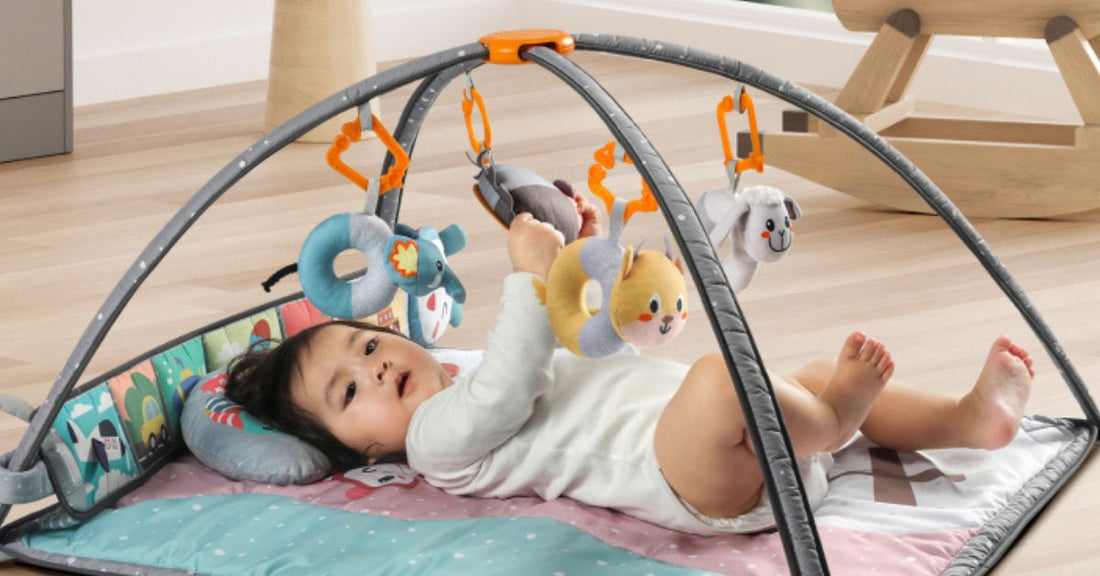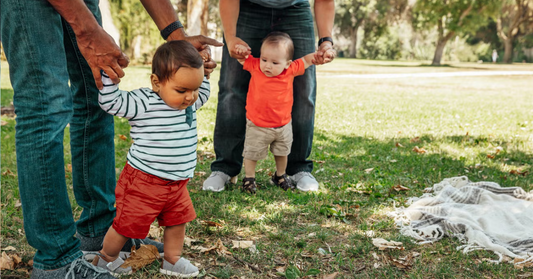When Do Babies Start Grabbing Things? Milestones and Tips for Parents

Most babies begin intentionally reaching and grabbing for objects around 3 to 4 months old, with skills developing rapidly throughout their first year. Grasping is an essential milestone—it helps strengthen muscles, improves coordination, and supports cognitive growth. This article breaks down what to expect at each stage, offers tips to encourage your baby’s motor skills, and explains when to seek advice if you have concerns about your child's development.
Most babies begin intentionally reaching and grabbing for objects around 3 to 4 months old. Initially, newborns display reflexive grabbing, but purposeful grasping develops gradually over their first year. By 4 to 8 months, your baby’s grasp will become more coordinated and precise, eventually progressing to advanced fine motor skills by their first birthday.
Why is Grasping Important for Babies?
Grasping is a critical developmental milestone because it:
- Strengthens hand and arm muscles, setting the stage for future motor skills.
- Enhances hand-eye coordination, essential for later tasks like writing, dressing, and feeding independently.
- Encourages cognitive development through exploration and understanding of their environment.
- Supports their sensory development by allowing them to touch, explore, and learn different textures and shapes.
How Babies Learn to Reach, Grab, and Hold Things: By Age
Newborn to 2 Months: Reflexive Movements
In the earliest weeks, your baby’s grasping movements are primarily reflexive. You might notice the "palmar grasp reflex," where your baby closes their fingers tightly when something touches their palm. Although not intentional, this reflex lays the groundwork for later purposeful movements.
3 Months: Intentional Attempts Begin
Around 3 months, your baby will start making deliberate attempts to reach out toward toys or familiar faces. While their accuracy isn't perfect yet, they're rapidly improving their hand-eye coordination. Encourage this by placing colorful toys just out of reach to motivate purposeful movements.
4 to 8 Months: Mastering the Grasp
Between 4 and 8 months, you'll notice significant improvements. Babies typically master the palmar grasp—using their whole hand to grasp objects. By around 7 to 8 months, many babies also begin practicing the "pincer grasp," using their thumb and forefinger to pick up smaller items. This stage is perfect for introducing safe toys, teething rings, and soft blocks.
9 to 12 Months: Fine Grip and Coordination
At this age, your baby refines their grasping skills significantly. The pincer grasp becomes more precise—ideal for picking up finger foods and small toys. This is also the time when babies often start feeding themselves, enhancing independence and confidence in their abilities.
How to Help Your Baby Develop Reaching and Grabbing Skills
Encouraging your baby to develop their grasping skills is both fun and beneficial. Here are some practical tips:
- Provide Stimulating Toys: Offer baby toys of varying textures, shapes, and sizes to encourage exploration.
- Encourage Tummy Time: Regular tummy time helps strengthen arm, shoulder, and back muscles, essential for reaching and grasping.
- Play Interactive Games: Simple games like placing toys slightly out of reach encourage your baby to stretch and improve coordination.
- Safe Environment: Ensure the play area is safe, clean, and free of choking hazards, especially as your baby learns to grab smaller items.
What to Do if Your Baby Isn't Reaching or Grabbing
Remember, babies develop at their own pace. If your baby seems a little behind on reaching milestones, don't panic immediately. However, you should consult your pediatrician if you notice:
- No attempt at reaching or grasping by approximately 5-6 months.
- Persistent tightness or looseness in hands or arms.
- Consistent preference for using only one hand or arm.
Early intervention, if required, can significantly benefit your baby's development, so reaching out promptly to your pediatrician or a specialized therapist is always the best approach.
Conclusion
Understanding when babies start grabbing things and the importance of this milestone helps you support your child's development effectively. Each baby is unique and may reach milestones at slightly different times. By providing a supportive environment, engaging in activities that promote motor skills, and staying attentive to developmental cues, you can help your little one master their reaching and grabbing milestones confidently.
Remember, if you have any concerns, always consult your pediatrician—they are your best resource for personalized advice and reassurance. Happy parenting!







0 comments